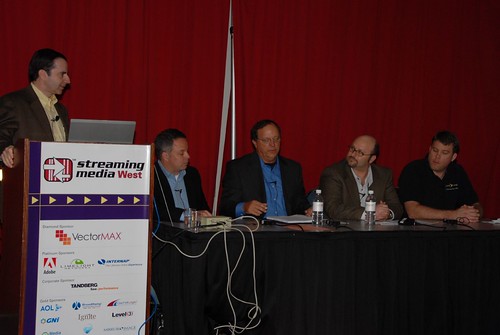 While it hasn’t been officially announced, many news sources have been reporting that Twentieth Century Fox Film has signed a deal with Apple that will allow consumers to rent new Fox DVD releases through Apple's iTunes store. It's been speculated and rumored for some time, that Apple would launch a movie rental service, and it’s likely that Steve Jobs is saving the official announcement for his Jan. 14th keynote at the Macworld Expo.
While it hasn’t been officially announced, many news sources have been reporting that Twentieth Century Fox Film has signed a deal with Apple that will allow consumers to rent new Fox DVD releases through Apple's iTunes store. It's been speculated and rumored for some time, that Apple would launch a movie rental service, and it’s likely that Steve Jobs is saving the official announcement for his Jan. 14th keynote at the Macworld Expo. This is big news, as it charts a new distribution model for iTunes and the deal strengthens Apple’s position in video downloading ecosystem. Sure, digital movie downloads have been around for several years but really hasn't had widespread acceptance. In fact, last week Wal-Mart killed its video download service. The Red Herring reported that the Apple-Fox deal could be a trend for Hollywood studios selling directly to consumers and "cutting out the middleman." Stacy Widlitz, of Pali Research, believes the deal will be a long-term negative for Blockbuster and Netfix, who both saw their shares down 5% following the Apple-Fox news.
This is big news, as it charts a new distribution model for iTunes and the deal strengthens Apple’s position in video downloading ecosystem. Sure, digital movie downloads have been around for several years but really hasn't had widespread acceptance. In fact, last week Wal-Mart killed its video download service. The Red Herring reported that the Apple-Fox deal could be a trend for Hollywood studios selling directly to consumers and "cutting out the middleman." Stacy Widlitz, of Pali Research, believes the deal will be a long-term negative for Blockbuster and Netfix, who both saw their shares down 5% following the Apple-Fox news.You can expect that more studios will follow suit in the coming year. Prior to News Corp, Disney was the only other major content partner selling movies through iTunes, (Paramount, Lionsgate and MGM have partial catalog deals with iTunes), but those movies were only for sale and not for rent. New Corp stands benefit from this arrangement having its content available from iTunes and Hulu. Apple will also make it’s FairPlay DRM technology available, something else it hasn't done before, which could make iTunes content playable on Zune and Sansa devices.
Although Apple TV has really caught on, selling only 400,000 units which is 600,000 shy of it’s projection, it's stock continues to rise.











 Tim Siglin -
Tim Siglin - 
 Ryan Stewart's Blog -
Ryan Stewart's Blog - 






 This is my first post and it's appropriate that I re-purpose an image from one of my early experimental videos,
This is my first post and it's appropriate that I re-purpose an image from one of my early experimental videos,